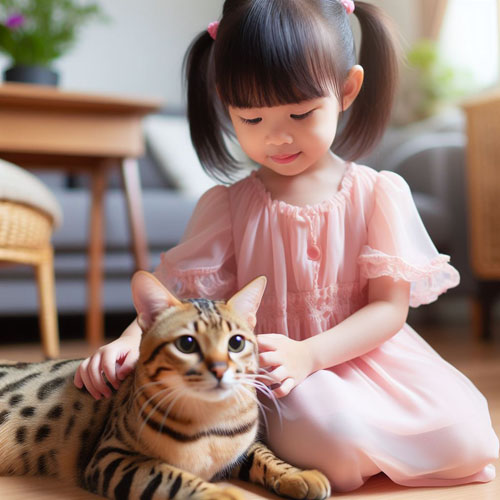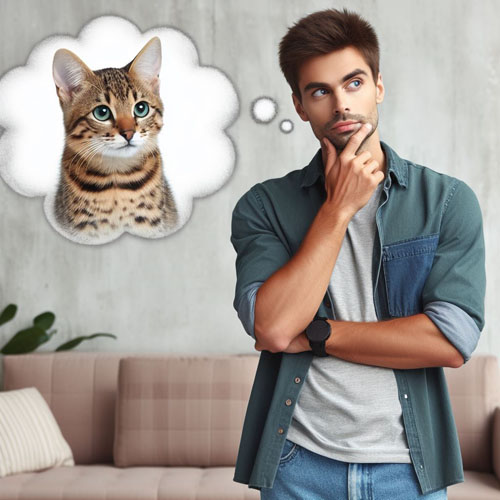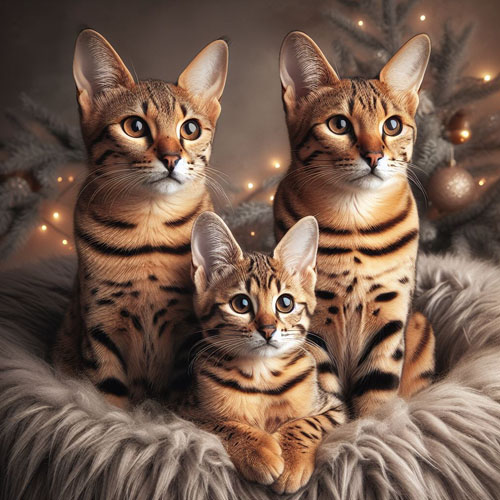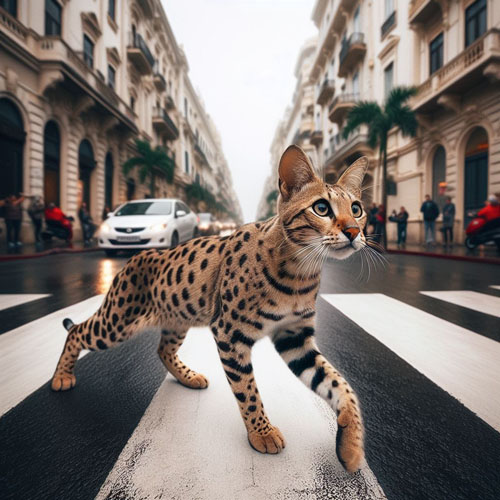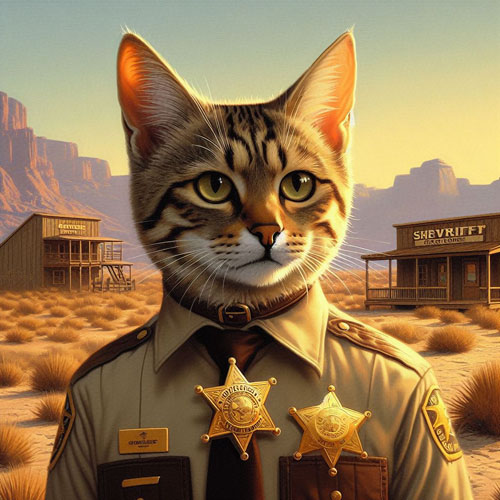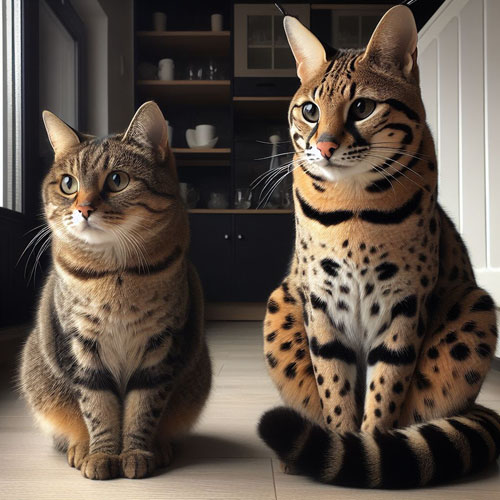Exploring the Generations of Savannah Cats: From F1 to F7
Savannah cats, a captivating and unique breed, are a result of the deliberate crossbreeding of domestic cats with servals, a wild African Serval. The breeding process is categorized into distinct generations, denoted as F1 (first generation) through F7 (seventh generation). Each generation reflects the percentage of serval ancestry and brings forth unique traits in terms of appearance, behavior, and compatibility as domestic companions.
F1 Savannah Cats: The Wild Beginnings
The F1 Savannah cat is the first generation resulting from the crossbreeding of a domestic cat with a serval. As a hybrid, F1s typically have a higher percentage of serval genes, around 50%. Due to this significant serval influence, F1s exhibit more wildcat-like traits in terms of size, appearance, and behavior. They often display elongated bodies, large ears, and striking spotted or marbled coat patterns reminiscent of their serval ancestors.
F1 Savannah cats are known for their intelligence, curiosity, and high energy levels. However, their wild instincts can make them challenging as household pets. They may be more independent and less inclined to cuddle or socialize with humans compared to later generations. Additionally, F1s may have specific dietary and environmental requirements to meet their unique needs.
F2 and F3 Savannah Cats: Balancing Act
As we move to the F2 (second generation) and F3 (third generation) Savannah cats, the serval influence gradually diminishes, but it remains prominent. F2s have one serval grandparent, while F3s have a serval great-grandparent. This reduction in serval ancestry often results in cats with a more balanced combination of wild and domestic traits.
F2 and F3 Savannah cats tend to be more manageable as household pets compared to F1s. They maintain the distinctive spotted or marbled coat patterns, but their size may be slightly reduced. Their behavior may also become more adaptable to domestic living, although they may still retain some of the energetic and curious characteristics of their wild ancestors.
F4 and F5 Savannah Cats: Domestic Harmony
As we progress to the F4 (fourth generation) and F5 (fifth generation) Savannah cats, the serval influence continues to decrease. At this stage, the cats have a serval great-great-grandparent for F4s and a serval great-great-great-grandparent for F5s. This results in cats that are more similar in appearance and behavior to domestic cats while still retaining some exotic traits.
F4 and F5 Savannah cats are often considered excellent choices for those seeking a balance between a distinctive appearance and a more manageable temperament. They typically have smaller and more refined features compared to the earlier generations, making them more suitable for living in a domestic setting. Their coat patterns remain striking, but the cats are more likely to exhibit behaviors typical of traditional domestic cats.
F6 and F7 Savannah Cats: Domestic Elegance
The F6 (sixth generation) and F7 (seventh generation) Savannah cats mark a significant transition towards domestication. With only minimal serval ancestry remaining at this stage (a great-great-great-great-grandparent for F6s and a great-great-great-great-great-grandparent for F7s), these cats closely resemble traditional domestic cats both in appearance and behavior.
F6 and F7 Savannah cats typically have a more relaxed and adaptable temperament, making them well-suited for family life. Their coat patterns may still display the distinctive spots or marbling, but the overall appearance is more in line with that of a domestic cat. Size is generally comparable to other domestic breeds, and these generations often make affectionate and playful companions.
Choosing the Right Generation
Selecting the right generation of Savannah cat depends on individual preferences, lifestyle, and experience with exotic pets. F1 and F2 Savannah cats may appeal to those seeking a more wild and unique companion but require owners with a deep understanding of the needs and challenges associated with wildcat hybrids.
For individuals looking for a balance between exotic appearance and domestic temperament, F3 and F4 Savannah cats offer an excellent compromise. They retain some wild characteristics but are generally more manageable in a household setting.
For those prioritizing a domesticated pet with minimal wild traits, F5, F6, and F7 Savannah cats are ideal choices. These generations are well-suited for families, as they combine the distinctive look of the breed with a more predictable and familiar feline demeanor.
Conclusion
The generations of Savannah cats, from F1 to F7, showcase the fascinating journey of this unique breed from its wild beginnings to domestic elegance. Each generation brings forth a distinct combination of wild and domestic traits, making it crucial for potential owners to understand their preferences and capabilities before choosing a Savannah cat as a companion.
Whether captivated by the wild allure of an F1 or drawn to the domestic charm of an F6, Savannah cats continue to enchant cat enthusiasts around the world. As with any pet, responsible breeding practices, proper care, and a deep understanding of the specific needs of each generation are essential to ensuring a harmonious relationship between these captivating cats and their human companions.
